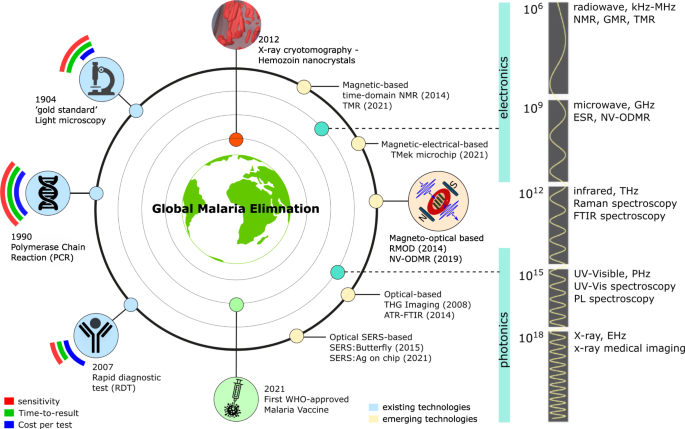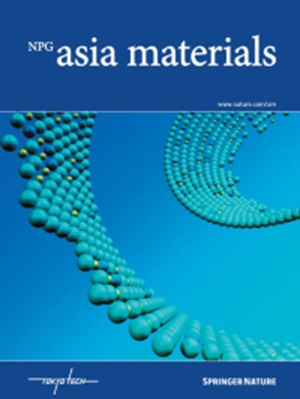Hemozoin in malaria eradication—from material science, technology to field test
IF 8.3
2区 材料科学
Q1 MATERIALS SCIENCE, MULTIDISCIPLINARY
引用次数: 0
Abstract
Malaria continues to be among the most lethal infectious diseases. Immediate barriers include the detection of low-parasitemia levels in asymptomatic individuals, which act as a reservoir for future infections, and the emergence of multidrug-resistant strains in malaria-endemic, under-resourced regions. The development of technologies for field-deployable devices for early detection and targeted drugs/vaccines is an ongoing challenge. In this respect, the identification of hemozoin during the Plasmodium growth cycle presents a unique opportunity as a biomarker for malaria infection. The last decade has witnessed the development of numerous opto-/magnetic- based ultrasensitive hemozoin sensing technologies with tremendous potential of rapid and accurate malaria diagnosis and drug testing. The unique information in hemozoin formation can also shed light on the development of targeted drugs. Here, we present a comprehensive perspective on state-of-the-art hemozoin-based methodologies for detecting and studying malaria. We discuss the challenges (and opportunities) to expedite the translation of the technology as a point-of-site tool to assist in the global eradication of malaria infection. Malaria continues to be among the most lethal infectious diseases. In the last two decades, we have witnessed unprecedented success in reducing the mortality rate. With the UN resolution of eradicating malaria by 2030 approaching fast, the scientific community has devoted substantial attention to interdisciplinary research using the latest opto-/magnetic-based technologies to detect a novel biomarker coming from the malarial pigment (hemozoin), which also carries vital information for discovering targeted drugs. This perspective article looks into the growing interest in this field and discusses the practical applicability of these sensing technologies.


根除疟疾中的半胱氨酸--从材料科学、技术到现场试验
疟疾仍然是最致命的传染病之一。直接的障碍包括在无症状个体中检测到低寄生虫血症水平,这是未来感染的储存库,以及在疟疾流行和资源不足地区出现耐多药菌株。开发用于早期检测和靶向药物/疫苗的外勤部署设备技术是一项持续的挑战。在这方面,疟原虫生长周期中疟原虫色素的鉴定为疟疾感染的生物标志物提供了独特的机会。过去十年见证了许多基于光/磁的超灵敏疟原虫色素传感技术的发展,具有快速准确的疟疾诊断和药物测试的巨大潜力。血色素形成的独特信息也可以为靶向药物的开发提供启示。在这里,我们提出了一个全面的观点,最先进的基于疟原虫的方法检测和研究疟疾。我们讨论了加速将该技术转化为协助全球根除疟疾感染的现场点工具的挑战(和机遇)。疟疾仍然是最致命的传染病之一。在过去二十年中,我们在降低死亡率方面取得了前所未有的成功。随着联合国关于到2030年根除疟疾的决议即将到来,科学界已经将大量注意力投入到跨学科研究中,利用最新的基于光/磁的技术来检测来自疟疾色素(血色素)的一种新的生物标志物,这种生物标志物也携带着发现靶向药物的重要信息。这篇透视文章着眼于这一领域日益增长的兴趣,并讨论了这些传感技术的实际适用性。
本文章由计算机程序翻译,如有差异,请以英文原文为准。
求助全文
约1分钟内获得全文
求助全文
来源期刊

Npg Asia Materials
MATERIALS SCIENCE, MULTIDISCIPLINARY-
CiteScore
15.40
自引率
1.00%
发文量
87
审稿时长
2 months
期刊介绍:
NPG Asia Materials is an open access, international journal that publishes peer-reviewed review and primary research articles in the field of materials sciences. The journal has a global outlook and reach, with a base in the Asia-Pacific region to reflect the significant and growing output of materials research from this area. The target audience for NPG Asia Materials is scientists and researchers involved in materials research, covering a wide range of disciplines including physical and chemical sciences, biotechnology, and nanotechnology. The journal particularly welcomes high-quality articles from rapidly advancing areas that bridge the gap between materials science and engineering, as well as the classical disciplines of physics, chemistry, and biology. NPG Asia Materials is abstracted/indexed in Journal Citation Reports/Science Edition Web of Knowledge, Google Scholar, Chemical Abstract Services, Scopus, Ulrichsweb (ProQuest), and Scirus.
 求助内容:
求助内容: 应助结果提醒方式:
应助结果提醒方式:


